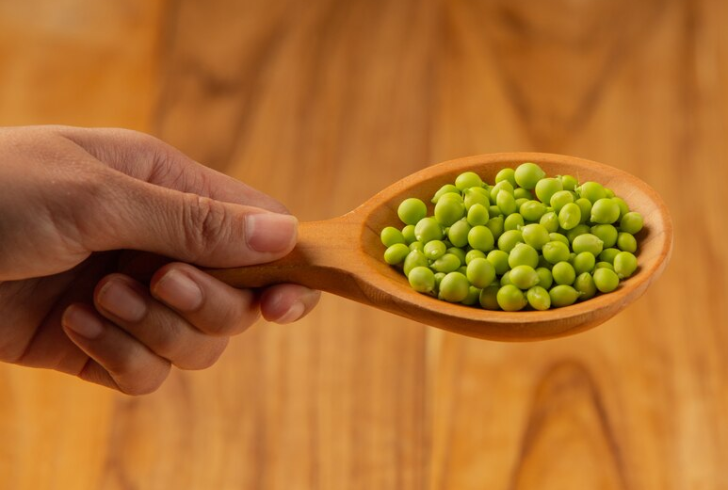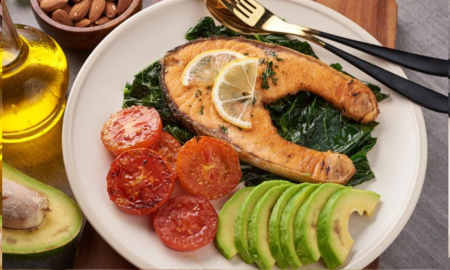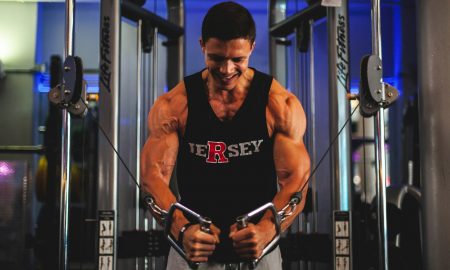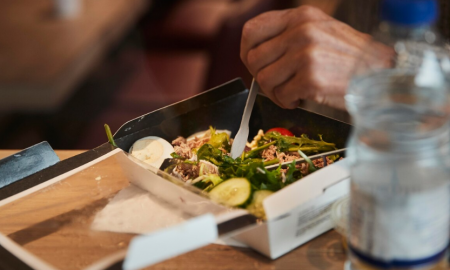
5 Healthy & Nutrient-Packed Beans You Should Be Eating!

Beans are a powerhouse of nutrition, offering a blend of protein, fiber, vitamins, and minerals that support overall health. Despite their incredible benefits, these versatile legumes often don’t get the attention they deserve. While trendy superfoods like kale or quinoa dominate the spotlight, beans quietly remain one of the most nutrient-dense and affordable food options available.
Let’s explore why they should be a staple in your meals and which types are the most beneficial for your health.
The Health Benefits of Beans

Freepik | chandlervid85 | Bean eaters typically have higher intakes of key nutrients, leading to better diets.
Beans aren’t just a source of plant-based protein; they also pack a powerful punch of fiber, vitamins, and minerals that support your overall health. Here’s why adding them to your diet is a good idea:
1. Heart Health – Studies suggest that eating beans regularly can help lower bad cholesterol levels, reducing the risk of heart disease.
2. Weight Management – Beans are filling, which can help curb hunger and prevent overeating. Their high fiber content also supports digestive health.
3. Blood Sugar Control – Despite their carbohydrate content, beans have a low glycemic index, making them a great option for controlling blood sugar levels and managing diabetes.
4. Cancer Prevention – Beans have been linked to a lower risk of colorectal cancer due to their rich fiber and antioxidant content.
5. Better Diet Quality – Those who eat beans typically have a higher intake of key nutrients like iron, calcium, and potassium, contributing to an overall better diet.
Beans are low in fat and sodium, making them an excellent choice for anyone looking to improve their diet without adding extra calories or processed ingredients. As you read on, we’ll take a closer look at five bean varieties that pack the most punch nutritionally.
5 Types of Beans You Should Eat
While all beans provide a host of health benefits, certain types stand out for their unique nutrient profiles. Here are five types of beans that offer a particularly impressive range of nutrients:
1. Lentils
Lentils are incredibly nutrient-dense and easy to prepare. Just half a cup of boiled lentils offers around 8 grams of fiber and 9 grams of protein. They’re also packed with important micronutrients such as B vitamins, iron, and magnesium.
How to Enjoy Them – Lentils can be added to salads, soups, and curries. They also make a great substitute for meat in dishes like spaghetti Bolognese or even as the base for veggie burgers.
2. Black Beans
Black beans are not only delicious but also incredibly versatile. Half a cup of canned black beans provides 6 grams of both fiber and protein, along with essential nutrients like magnesium and folate.
How to Enjoy Them – Toss black beans into salads, burritos, or taco bowls. You can even mash them into burgers or blend them into soups for a hearty texture.
3. Cannellini Beans
Cannellini beans are mild and creamy in texture, making them an excellent choice for soups and stews. They provide 5 grams of fiber and 6 grams of protein per half-cup, along with 15% of your daily iron needs.
How to Enjoy Them – Cannellini beans work wonderfully in dishes like minestrone or pasta fagioli. You can also whip them up into a creamy dip with olive oil, lemon juice, garlic, and herbs.
4. Chickpeas
Chickpeas are another popular legume that can boost your protein intake. With 6 grams of fiber and 7.5 grams of protein per half-cup, they also offer important minerals like magnesium and iron.
How to Enjoy Them – You can toss chickpeas into a salad, mash them for sandwiches, or use them to make hummus. Roasted chickpeas also make a satisfying snack when drizzled with olive oil and your favorite seasonings.
5. Edamame

Freepik | jcomp | Edamame provides 11g of protein per half-cup, plus fiber, folate, and other nutrients.
Edamame are young soybeans that offer a rich source of protein—11 grams per half-cup. They’re also packed with fiber, folate, vitamin K, and several other important vitamins and minerals.
How to Enjoy Them – Edamame makes a great snack on its own, but you can also toss them into stir-fries, add them to rice bowls, or even mix them into a salad.
Choosing the Right Beans
When shopping for beans, it’s essential to look for high-quality options. Dried, canned, and frozen beans can all be healthy choices, but there are a few things to keep in mind:
1. Avoid added sauces or salt
Some canned beans come with added ingredients that can detract from their nutritional value. Always check the label to make sure you’re getting beans in their purest form.
2. Look for BPA-free cans
BPA (bisphenol A) is a chemical that has been linked to various health issues. While most cans are now BPA-free, it’s always a good idea to double-check.
3. Choose organic when possible
Organic beans are grown without synthetic pesticides, making them a cleaner and more sustainable choice.
Why Beans Deserve a Spot in Your Diet
Beans are a nutritional treasure that’s often overlooked. From their heart-healthy properties to their ability to manage blood sugar and promote weight loss, these legumes offer numerous benefits. Affordable, versatile, and easy to incorporate into meals, beans are a simple way to enhance your diet without breaking the bank.
So, next time you’re planning your grocery list, remember to include these nutrient-packed wonders. Your health—and your taste buds—will thank you!
More in Food
-
`
Simple Steps to Make the Philadelphia Cheesecake Recipe
If you’re looking to make a dessert that never fails to impress, this Philadelphia cheesecake recipe is your go-to. With its...
August 21, 2024 -
`
How Much Does It Cost to Travel in Europe?
Dreaming of strolling along the Seine in Paris, exploring ancient ruins in Rome, or sipping sangria on a Spanish beach? Europe’s...
August 13, 2024 -
`
Mahershala Ali and Amatus-Sami Karim’s Decade-Long Marriage
Who is Mahershala Ali married to? This question often arises when discussing the acclaimed actor. Mahershala Ali, the talented and versatile...
August 5, 2024 -
`
Is It Normal to Be Sore After a Massage? 9 Ways to Relieve Soreness
Is it normal to be sore after a massage? Many people schedule a massage to drift into a state of relaxation...
August 3, 2024 -
`
Delicious Pescatarian Breakfast Ideas
Exploring new breakfast ideas can be a delightful way to start your day, especially when they align with a pescatarian diet....
July 24, 2024 -
`
Is Phuket Worth Visiting in 2024?
Phuket, Thailand’s gem of an island, has long attracted travelers with its pristine beaches, lively nightlife, and cultural treasures. The question...
July 19, 2024 -
`
What is the Best Way to Melt Chocolate for Any Recipe?
Chocolate is a beloved ingredient in many desserts, from ganache and cake batters to decadent drizzles over ice cream. Knowing what...
July 12, 2024 -
`
How to Plan a Backpacking Trip Like a Pro in 16 Steps
Planning a backpacking trip can be as thrilling as it is daunting, especially if you’re keen to make every moment count....
July 5, 2024 -
`
How to Build Fast-Twitch Muscles in 5 Simple Steps
Have you ever wondered how to build fast-twitch muscles? These powerful muscle fibers are key to explosive strength and speed. Whether...
June 20, 2024















You must be logged in to post a comment Login